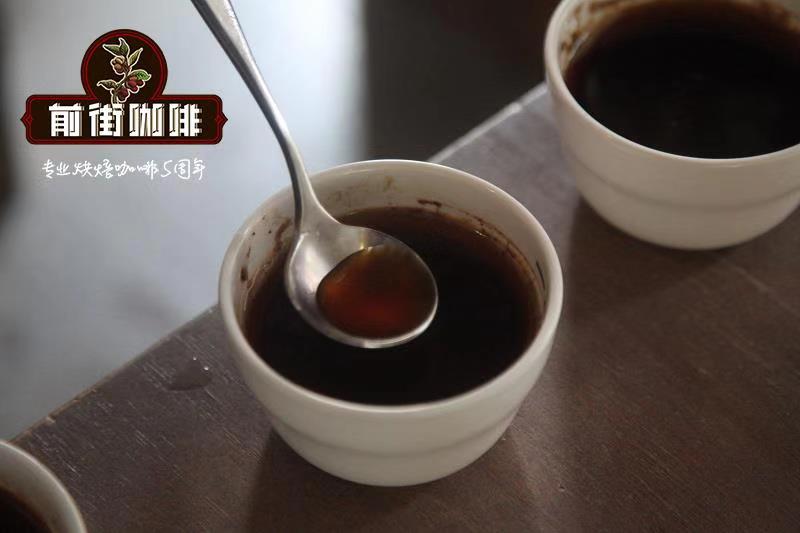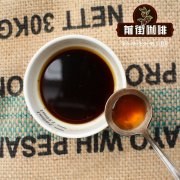How about Guatemalan coffee beans? Guatemalan coffee flavor and taste description

Professional coffee knowledge exchange more coffee bean information please follow the coffee workshop (Wechat official account cafe_style)
Qianjie Coffee introduction-Guatemalan Coffee
Guatemala is located in the tropics, the northern and eastern coastal plains have a tropical rain forest climate, and the southern mountains have a subtropical climate. 2/3 of the territory is mountains and plateaus. Mount Tahumurko is 4211 meters above sea level, making it the highest peak in Central America. The central plateau is also the cultural center of Guatemala, where temperatures are mild all year round at an altitude of 1300 to 1800 meters, with daily temperatures between 18 and 28 ℃. The unique natural conditions make Guatemala an important producing area suitable for coffee growth.
Although the literature shows that Guatemala has been growing and drinking since 1747, the prevailing view is that coffee was first introduced to Guatemala by Jesuit monks around 1750.
In 1845, the Committee for the Promotion of Coffee cultivation and Industry was established, and coffee became an important cash crop in Guatemala.
In 1871, Justo Rufino Barrios was elected president of Guatemala and introduced a series of reform policies. Coffee has since become a pillar industry of the national economy.
When Jorge Uvico came to power in the 1930s, he worked to lower the price of coffee to stimulate exports. He actively built infrastructure, but also gave more power and land to the American conglomerate UFC, which later became powerful in Guatemala.
In 1953, President Abens planned to introduce a land reform bill that would expropriate land previously controlled by UFC and redistribute it to farmers, but it was opposed by UFC (supported by the State Department). In 1954, the Central Intelligence Agency launched a coup that overthrew the government of Abens, which triggered a long civil war in Guatemala in 1960-1996.
Around 2000, Guatemala's coffee production reached a peak, and its annual output now ranks among the top 10 in the world. During the 2015 season, Guatemala produced 34 million bags of coffee a year, about four times as much as Kenyan coffee, which is common on the market. )
Guatemala has eight major coffee producing areas, mainly in the south of the country. There are 34 volcanoes in the territory, which provide special soil for coffee cultivation.
Antigua (Antigua or Antigua), located in central Guatemala, is the most famous producing area in Guatemala. Due to the abuse of the name Antigua on the market, it became a statutory production area in 2000, the full name is "Genuine Antigua Coffee).
The Antigua valley is surrounded by three volcanoes: Agua, Fuego and Acatenango, creating a beautiful valley. Every 30 years or so, the area near Antigua is hit by a volcanic eruption, which provides more nitrogen to the already rich land, and plenty of rainfall and sunlight make the place more suitable for growing coffee. Volcanic ash from the eruption makes the soil of Antigua rich in minerals. Volcanic pumice can maintain humidity and overcome the lack of rainfall in Antigua; dense tree shade protects against occasional frosts.
Antigua coffee has a velvety mellow, rich and lively spice flavor, richer taste, and it has a fascinating tobacco flavor and fine sour taste. Compared with other varieties of coffee in Guatemala, critics prefer this mixed flavor coffee with spicy flavor. The extra hard coffee beans here are a rare good coffee with full grains, delicious taste and balanced acidity. In addition, its giant coffee beans have attracted a lot of attention in Guatemala.
END
Important Notice :
前街咖啡 FrontStreet Coffee has moved to new addredd:
FrontStreet Coffee Address: 315,Donghua East Road,GuangZhou
Tel:020 38364473
- Prev

How about El Salvador Coffee? El Salvador Bourbon Coffee Flavor Introduction
Professional coffee knowledge exchange More coffee bean information Please pay attention to coffee workshop (Weixin Official Accounts cafe_style) Front Street Coffee Introduction-El Salvador Coffee El Salvador [Climate Characteristics] Savanna climate Plain area belongs to tropical rain forest climate, mountain area belongs to subtropical forest climate. The annual average temperature is 25-28℃, the annual precipitation in mountainous areas is more than 1,800 mm, and that in coastal areas is about 1
- Next

What are the characteristics of Ethiopian coffee beans? introduction to the characteristics of Yega Xuefei coffee beans
Professional coffee knowledge exchange more coffee bean information please follow the coffee workshop (Wechat official account cafe_style) Qianjie Coffee introduction-Ethiopia Yega Xuefei Coffee characteristics Yega is located in Ethiopia's Sidamo province, 2000 meters above sea level, is one of the highest coffee-producing areas in Ethiopia, the coffee produced here is called yirga
Related
- Beginners will see the "Coffee pull flower" guide!
- What is the difference between ice blog purified milk and ordinary milk coffee?
- Why is the Philippines the largest producer of crops in Liberia?
- For coffee extraction, should the fine powder be retained?
- How does extracted espresso fill pressed powder? How much strength does it take to press the powder?
- How to make jasmine cold extract coffee? Is the jasmine + latte good?
- Will this little toy really make the coffee taste better? How does Lily Drip affect coffee extraction?
- Will the action of slapping the filter cup also affect coffee extraction?
- What's the difference between powder-to-water ratio and powder-to-liquid ratio?
- What is the Ethiopian local species? What does it have to do with Heirloom native species?

